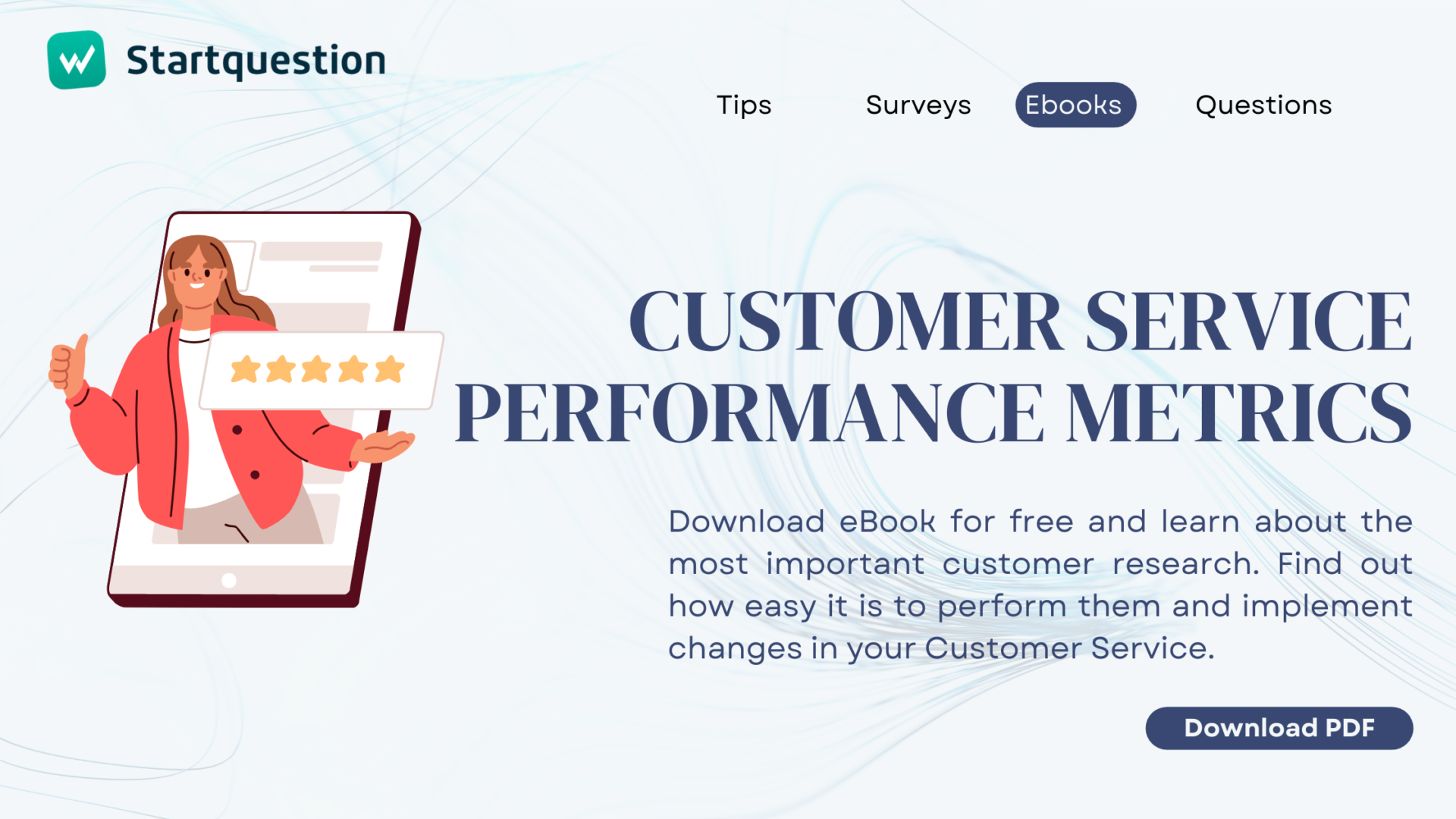All website survey tools look similar at first. However, some are more minimalistic, while others include features like website analytics and email or in-app surveys. Even the top survey software tools offer features that vary. This brings us to the question of how to research the best survey tool.
Below, you’ll learn how to research the best survey tools and what features you ought to consider.
4 Steps to Research the Best Survey Tool
Researching the best survey tool shouldn’t be that hard. Just know where to look and what to look for. Here’s how you can start your research.
1. Google It
Google, or other search engines, is your best friend.
Enter your keywords into Google. Try narrowing down your search to more specifics, for instance, the best survey tools for small businesses or survey tools for nonprofits.
Click on the search result pages to find out which survey tools vendors, experts, and even users think are the best. Read what they have to say about each piece of software. Four or five pages should give you an idea of which software to shortlist and investigate further.
However, remember that not all of the pages at the top of the SERP are written objectively. Some may be biased toward vendors or the vendor itself. Still, these pages do give you a big picture of what’s out there.
Remember, you’re making your shortlist from these pages. They will not be the deciding factors in your selection process.
2. Check Business Software Marketplaces
While a Google search will help you find resources to learn more about survey tools, software marketplaces will provide a deeper dive into these tools. You can compare the top survey software tools based on essential factors such as features, prices, system requirements, integrations, and more.
Software marketplaces usually offer top solutions and comparison guides for various software categories. They typically have a comparison tool to help you match different vendors side by side for a more detailed look. You can also read user reviews, thus giving you an idea of the strengths and weaknesses of tools based on users’ real-world experiences.
There are numerous other software marketplaces you can visit. A good starting point is FinancesOnline, which has over 500 survey software tools in its database.
3. Compare Features and Prices
Now that you’ve made a shortlist, it’s time to compare features and prices. You can do this on the software marketplace. But if you prefer the longer road, you can visit each vendor’s website and look for the main features, what each package includes, and how much each package costs.
Some vendors provide customized quotes rather than flat-rate packages. Make sure you understand what you want and need so that you can explain it to the vendor’s sales representative. The representative will design a package that best meets your needs and provide you with a cost estimate.
This research phase aims to determine which tool will provide the best value for money. Determine which device can meet your bare minimum for the price you will pay.
This step allows you to eliminate tools that would either not meet your requirements or would meet your needs but at a high cost.
4. Ask Around
Hopefully, you have narrowed down your options and are down to no more than four pieces of software on your list. Time to investigate deeper. Start asking around.
If you know any tech people who use survey tools, see if they use any ones on your list. Interview these individuals.
Join survey tool-specific groups on social media sites. Inquire about what other members think of the tools. It would be even better to ask them to share their experience.
Post a question on a Q&A website like Quora. There are numerous experts available to assist.
Examine the feedback. Don’t just read the reviews on the vendor’s pages. Visit other software review websites, such as FinancesOnline. Use your accumulated knowledge of user experiences with each software to narrow your list further.
5. Use Free Trials
You’ve probably figured out which tool to use after asking around. However, before you spend your money, it’s best to take advantage of vendors’ free trials. Most vendors provide a free seven-, 14-, or 30-day trial period. Take advantage of this because it is your only way to fully explore what software has to offer.
If, after the trial period, you discover that the software does not perform as expected and does not meet your needs, you can simply resign from paying for the account with no strings attached. Otherwise, if you find the tool valuable and worthwhile, you can proceed with the purchase without restarting your setup.
You can try our survey tool for free
Start trial period without any credit card or subscription and easily gather feedback via link, social media, email, and more.
No credit card required · Cancel any time · GDRP Compilant
What to Look for in a Survey Tool
There will be fundamental requirements for a survey tool. Nonetheless, each vendor will capitalize on what makes their survey tool unique. The pitch of the vendors can frequently sway you. While looking for the best survey tools, keep two things in mind: your needs and your budget.
The following are some features to look for when selecting a survey tool. However, make sure that each feature meets your requirements.
- Skip logic: Show alternative questions based on prior replies. Skip logic filters out non-demographic respondents, stopping them from answering portions in vain. Despite this being a basic survey tool feature, not all suppliers offer it.
- Aesthetic freedom: Change colors, fonts, and other design elements to increase the response rate. If your survey design or template is off-putting, likely, people will not even look at it.
- Piping: Piggyback off one section of a survey with piping. In this case, asking where someone lives allows the survey to ask when they moved there or what they like best about the area.
- Algorithm: Randomize question options so respondents are not biased when they answer questions.
- Data mining: Look at charts, Excel graphs, and other visuals to see how many people responded and what their responses mean. It saves time by eliminating the need to review each survey and manually review answers.
- Website fusion: Link a survey tool to your site, making it easier for respondents to complete a survey.
- Auto-save. Resume work if your computer crashes or freezes. Simply return to the survey, and your previous work will be saved.
- Multilingualism. Larger companies can use this feature to deliver surveys globally without hiring translators.
- Morphing questions. Change a question’s format, for example, from an open-ended question to a multiple-choice question. The art of
- Different Question Types. Go beyond just multiple-choice questions. You can create a Likert scale, NPS scale, checkboxes, or other types.
- Advanced Targeting. Control who to survey to improve user experience and response rates. You can tailor the message to the context. You can target based on online behavior or user traits, among others.
- The breadth of Templates: Save time from creating surveys from scratch. Templates make it easier and faster to create surveys. Not to mention, you can choose a design.
- Reporting: Receive a summary of results via email to see what users are saying and the major trends. You can choose how often you want to receive reports. Altogether, you get to save time.
- Integrations: Link with CRM or all-in-one marketing automation software to gather valuable data from customers. Use it to generate leads and add data to their profiles.
- Feedback collection. Collect feedback from visitors about to leave your website through exit-intent surveys.
- Responsive support. Going for a vendor that provides responsive support keeps you at ease; anytime you encounter a problem with the app, someone will be available to help you. Support could be via chat support, email, or phone.
- Data export format: Analyze data from your survey in two ways, first using your dashboard. Another way is to download data in whichever format you prefer–xls, pdf, etc.
- User and domain management: Add a new user or domain to an existing account rather than creating multiple accounts to manage multiple domains.
Common Survey Mistakes to Avoid
Surveys are among the most innovative ways to collect customer feedback, but only if done correctly. The survey may fail even if you have chosen a powerful tool. As difficult as it is to admit, the survey design is sometimes flawed. Either respondent does not answer all questions, or their responses are off-point. It now becomes a question of how well-constructed the survey questions are.
Here are some of the most common survey mistakes to avoid.
- Confusing questions. Survey questions must explicitly ask a particular and direct inquiry. Respondents are less likely to provide relevant information when perplexed by a question. Ask straightforward questions to ensure you and the respondent are on the same page.
- Too long questions. Long questions can quickly lose meaning. They could overwhelm or disorient. Go for short, direct, and to-the-point questions for respondents to understand clearly and accurately.
- Questions do not point to specific issues or problems. Some questions ask for general information about a respondent’s experience. If this were for a consumer survey, the responses would not clearly explain the problem or how a consumer would like the company to handle issues.
- Ambiguous rating system. Consumers frequently rate their experiences from one to five or 10. The response may give a basic idea of a consumer’s feelings, but it is arbitrary. For instance, even if dissatisfied, a client may provide a 10 to avoid disciplinary action against store employees or management. Such is a personal opinion based on values or beliefs that do not provide meaningful information for a company to develop.
- No means to clarify answers. Many surveys ask clients multiple choice questions without allowing them to elaborate like if a feature was influential in the buying decision, These are survey blunderbuss. Getting better responses from respondents is critical to improving products and marketing messages.
- Analyzing free-written responses can be difficult. Obtaining freely written or open-ended responses from target audiences via surveys can be challenging to measure. One question may ask a respondent to describe an experience with a particular product. While a survey tool can search for similar terms, it may not be easy to quantify hundreds or thousands of unique responses fully. As a result, businesses may need to examine each response to understand customer sentiment carefully.
Research Survey Tools to Meet Your Needs
Forbes said the art of mastering online surveys is in keeping them simple, focused, and short. Doing a survey yourself could be challenging, but with the help of the proper tools, you could get the best information you can leverage for your business.
Researching and investigating survey tools allows you to eliminate software that will not meet your needs. Leverage search engines, software reviews, and re-trials to create your shortlist and explore each tool. Don’t forget to match features to your needs. This way, you can choose the best tool that will give good value for your money.




